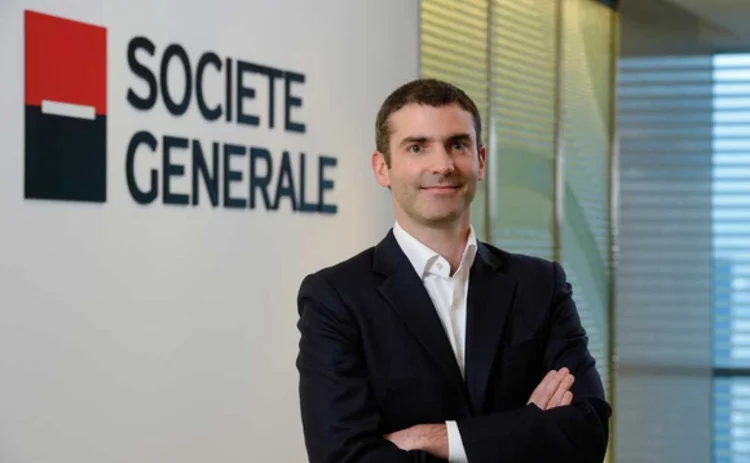
House of the year, Asia ex-Japan: Societe Generale
Asia Risk Awards 2017

Two years ago, Societe Generale was named Asia Risk House of the Year for the tireless effort it had made in expanding its derivatives footprint across the region and for strengthening those areas that it was historically weak in.
Since then, the French bank has worked just as hard to cement its position as the go-to house for hedging solutions and more complex investment products, building on its reputation to win over some significant regional players that are much choosier about which counterparty they deal with.
These efforts – along with steps taken to break down barriers between the different markets – mean that SocGen once again earns this highly sought-after award.
SocGen has long held that ‘local is best’, and this year worked diligently towards completing its geographic footprint, opening an office in Thailand and strengthening its onshore presence in Australia.
“To be a top player in Asia, you have to be close to clients, and you need to be local – that is why we are progressively completing our network of licences in the region in order to have a full geographical reach,” says Yann Garnier, head of global markets for the Asia-Pacific region.
He says it is this focus on being local that has allowed the bank to grow by a multiple of three, in terms of revenue, across the region, over the past six years. Since 2011, SocGen has strengthened its presence in a number of core markets – doubling its headcount in the team dealing with Japan, and tripling the headcount in both the South Korean and Chinese teams. It has also opened a slew of new offices in countries across the region.
SocGen’s big opening project this year has been in Thailand, which was completed in June of this year. For now, this is the last segment in the bank’s geographical reach and the bank has no immediate plans to open more offices. However, Garnier says that may depend on what future direction the markets take and on how clients’ needs can best be served.
“In the past [in Thailand], we have only been able to cover banks and asset managers on a reverse enquiry basis from offshore. The onshore setup will allow us to expand our coverage to insurance companies and pension funds, as well as improve our overall reach to clients from our Bangkok office. Thailand is a growing market where investors are looking for yield. Having proved our commitment by opening a local office, we have seen a good pick-up of activities in the country,” he says.
SocGen has been onshore in Australia since 2015, when it acquired futures commission merchant Newedge, which had a presence in the country, but this year the bank decided to add equity derivatives sales to its Australian operations, as well as some cross-asset structuring capability.
“Previously, we were selling to Australian clients on an opportunistic basis, but we want to have a more strategic approach onshore,” says Garnier. “We have started to build a team to cover onshore third-party distribution as well as institutional investors from Sydney.”
Being able to adapt to client needs in each and every jurisdiction is very important to being a viable player in the region, he says.
This continued focus on local markets has allowed the bank to expand its client base across the region by 40% since 2015, Garnier tells Asia Risk. But even more important for the bank has been its growing ability to attract what he refers to as ‘strategic clients’ – some of the very largest players in the region that increasingly require sophisticated structuring solutions that can be delivered at significant volumes. Garnier says that even three years ago SocGen would not have been able to partner with these top-echelon clients.
“Although we had some success with these [kinds of clients in the past], our platform is now becoming much more relevant to them,” he says. “It’s no longer just a reverse enquiry discussion – today, we have an advisory relationship with many of these strategic clients, whereby we work on a specific solution to address their needs.”
Garnier says that, over the past few years, the bank has executed a number of transactions for these large strategic clients, in which teams on the structuring side and on the research side work together for months to deliver a viable solution.
“Being relevant to clients that are very quantitative and very sophisticated means that we need to have credible resources to put in front of them. The clients have to know that we are able to deliver,” says Jerome Niddam, head of engineering for Asia-Pacific at SocGen.
To this end, SocGen has to ensure it has sufficient resources to throw at a particular solution that such large clients might require. In 2016, the bank hired a team of quants based in India to support the modelling that lies behind the structuring these clients require. These eight quants partner with engineers located in Hong Kong, as well as those located domestically within particular countries, to deliver these solutions.
Not only is the partnership with these strategic clients a resounding testimony to SocGen’s growing reputation and clout in the region, but it has also helped the bank improve its innovation capabilities.
“It’s like Formula One: carmakers invest in their innovations, spend a lot of time improving their products, and then some of these innovations will make it on to the rest of the market,” says Garnier. “For us, when we work with these kinds of strategic investors, we put a lot of resources into the deal – teams of quants and teams of engineers to deliver the transaction, which can be quite sophisticated – this certainly brings a burst of innovative solutions for other clients in the future. Some of the trades that we have done in Korea or Australia have now been recycled into simpler versions for distribution to smaller institutions across the region.”
This is what SocGen refers to as ‘industrialised customisation’ – taking solutions for one set of clients or one market and rolling them out to the rest of the region – and this year it has become a core focus for the bank.
One SocGen innovation that started life in Korea but is now being offered to other countries is an autocallable note known as a glider: a product that offers investor upside not only in rising markets, but in static and declining ones, too.
A standard autocallable will knock out on predetermined observation dates if the referenced index breaches an upside barrier, whilst the glider note will redeem early with a bonus payment if on such a date the index is observed above the glider autocall barrier. This may be as low as 65% of the initial index level.
“We structured the glider to meet specific needs in Korea, and we were able to automate its pricing and distribution very quickly,” says Niddam. “We then saw that there was a sea of opportunity in other countries in the region – places like Hong Kong and Singapore – and, thanks to our automated platform and cross-structuring capability, we were able to trade this product elsewhere as well.”
Garnier says that this is all about being able to break the silos between the divergent markets across the region – something he says the bank had significant success with in between 2016 and 2017.
“In the past year, we have significantly increased our ability to replicate successes from one country to another. A better flow of communications between different teams in the region has been key, from initially designing the product all the way through to automating the process,” he says.
SocGen’s sophisticated technology platform, which is constantly being fine-tuned and improved, plays a key role in SocGen’s ability to bring specific product developments designed for certain markets to a broader client base.
An example of this success can be found in a mutual fund product strategy that SocGen initially rolled out in Korea, but very quickly found could be applied elsewhere in the region. First, principal protected notes with leveraged exposure to mutual funds collected large inflows in the private banking space. Then, based on that initial success, SocGen was able to roll the structure out to all the markets in which the bank is active, including China, Hong Kong, Singapore, Malaysia, Thailand and Australia. The bank also increased capacity by recycling volatility risk, trading capped variance swaps to clients in Asia, Europe and the US.
“Whilst this would have been a success two years ago, our recent focus on smoothening the trading process has allowed the business to comfortably keep up with surging demand. Matching up our digitalisation teams with our quantitative teams means we can take new ideas and quickly scale them for distribution,” says Garnier.
Only users who have a paid subscription or are part of a corporate subscription are able to print or copy content.
To access these options, along with all other subscription benefits, please contact info@risk.net or view our subscription options here: http://subscriptions.risk.net/subscribe
You are currently unable to print this content. Please contact info@risk.net to find out more.
You are currently unable to copy this content. Please contact info@risk.net to find out more.
Copyright Infopro Digital Limited. All rights reserved.
As outlined in our terms and conditions, https://www.infopro-digital.com/terms-and-conditions/subscriptions/ (point 2.4), printing is limited to a single copy.
If you would like to purchase additional rights please email info@risk.net
Copyright Infopro Digital Limited. All rights reserved.
You may share this content using our article tools. As outlined in our terms and conditions, https://www.infopro-digital.com/terms-and-conditions/subscriptions/ (clause 2.4), an Authorised User may only make one copy of the materials for their own personal use. You must also comply with the restrictions in clause 2.5.
If you would like to purchase additional rights please email info@risk.net
More on Awards
Counterparty risk innovation of the year: Cumulus9
Cumulus9 proved standout vendor by bringing inventive solutions to the market, securing the award for Counterparty risk innovation of the year at the Risk Technology Awards 2024
Life and pensions ALM system of the year: Conning
Conning proved to be a standout vendor in the life insurance and pensions space and secured the Life and pensions ALM system of the year award at the Risk Technology Awards 2024
Joining the dots: banks leverage tech advancements for the future of regulatory reporting
The continued evolution of regulatory frameworks is creating mounting challenges for capital markets firms in achieving comprehensive and cost-effectiveawa compliance reporting. Regnology discusses how firms are starting to use a synthesis of emerging…
Markets Technology Awards 2024 winners' review
Vendors spy opportunity in demystifying and democratising – opening up markets and methods to new users
Derivatives house of the year: JP Morgan
Risk Awards 2024: Response to regional banking crisis went far beyond First Republic
Risk Awards 2024: The winners
JP Morgan wins derivatives house, lifetime award for El Karoui, Barclays wins rates
Best product for capital markets: Murex
Asia Risk Awards 2023
Technology vendor of the year: Murex
Asia Risk Awards 2023







